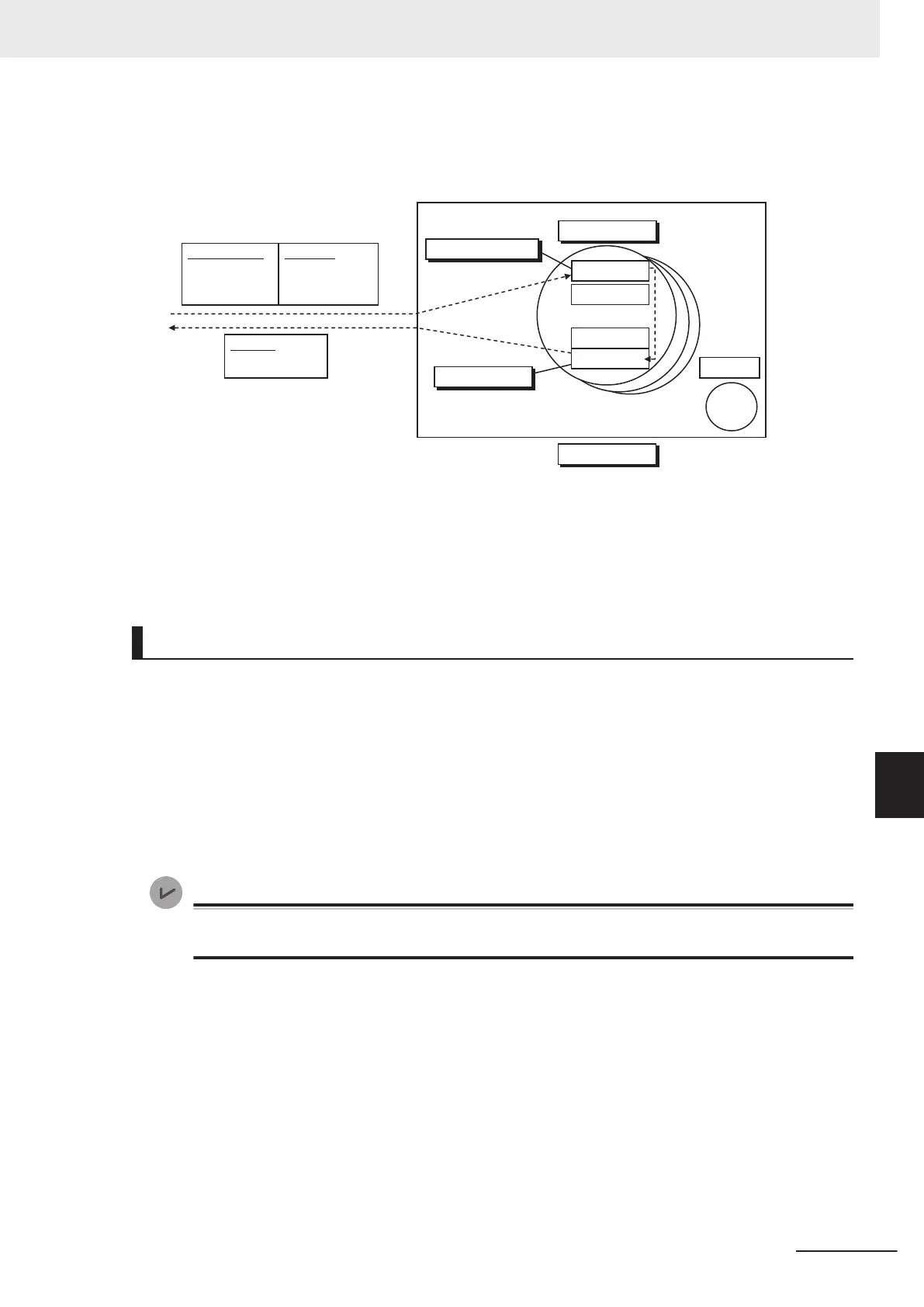When you make a request from an external device for a service, you must specify the Class ID In-
stance ID and Attribute ID. (The Instance ID and Attribute ID are not required for some services.)
Example: Reading the Name of a Device
(Identity Object Class ID = 01)
Service Request
Get_Attribute_
Single
Destination
Class: 1
Instance: 1
Attribute: 7
Response
Product Name
Instance ID = 1
Attribute = 7
Device
Class ID = 1
Instance ID = 1
Attribute 7
Attribute 6
Attribute 1
Class ID = 2
These are called IOI (Internal Object Identifier) because they identify the Class ID, Instance ID, and
Attribute ID within the device.
Refer to 8-5 CIP Object Services on page
8-47 for the class ID, instance ID, attribute ID, and service
code for each object.
Providing the Structure Variables to Input Request Paths
For a CIP communications instruction, you prepare a variable to store the request path. In this varia-
ble, you specify the object to access with the user program.
A structure in which the Class ID, Instance ID, and Attribute ID are specified is provided for the data
type of a variable for a request path.
There are two types of structures: standard structure (_sREQUEST_P
ATH) and extension structure
(_sREQUEST_PATH_EX). When you use an extension structure, it is possible to specify the size ac-
cording to the size of values of the Class ID, Instance ID, and Attribute ID of the object that you ac-
cess. When you use a standard structure, the size is always set to 16 bits.
Version Information
A CPU Unit with unit version 1.11 or later and Sysmac Studio version 1.15 or higher are re-
quired to specify extension structure (_sREQUEST_P
ATH_EX).
When a Standard Structure Variable Is Used
Example: Using a standard structure variable to input values into RqPath (Request Path) for the
CIPSend instruction
8 CIP Message Communications
8-17
NJ/NX-series CPU Unit Built-in EtherNet/IP Port User’s Manual (W506)
8-2 CIP Message Communications Client Function
8
8-2-5 Request Path (IOI)

